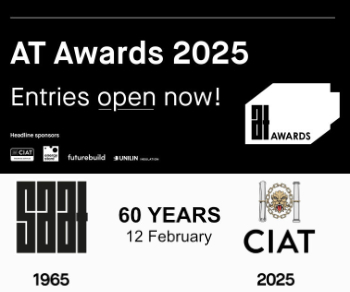William Dargan civil engineering contractor
This article is part of ICE's Engineer biographies series.
DARGAN, William (1799-1867), civil engineering contractor, was born in Co. Laois, not far from Carlow town, on 28 February 1799, the son of a farmer on the estate of the Earl of Portarlington.
He received his early education in Carlow and commenced his training in a local surveyor's office. His potential was recognised by Major Alexander of Milford and by Sir Henry Parnell MP, supporter of the Holyhead Road and thus a close associate of Thomas Telford (q.v.). Parnell wrote a letter of introduction to Telford, which led, in 1820, to Dargan being appointed as overseer of a portion of the Holyhead road contract. Amongst his responsibilities was the embankment over the Stanley Sands joining Holy Island to Anglesey.
Returning to Ireland, Dargan took on a number of small contracts on his own account, the most important being sections of the road from Dublin to Howth, including the long sea wall protecting the road towards Sutton. He also acted as surveyor to the Dublin to Carlow and Dublin to Dunleer road trusts and carried out some work on the River Barrow navigation.
In 1831, he took on his first large and prestigious project when he became the contractor for the construction of Ireland's first public railway, the Dublin and Kingstown. This contract provided the foundation upon which Dargan built his subsequent contracting enterprises. These included the Kilbeggan branch of the Grand Canal, the Ulster Canal, and contracts for many of the Irish railway companies, notably the routes from Dublin to Cork, Dublin to Drogheda, Dublin to Wicklow and Mullingar to Galway.
By 1853, he had constructed over 600 miles of railway and his name became synonymous with the development of Ireland's transport infrastructure. In the same year, he sponsored the Dublin Exhibition of Industry and was offered a knighthood, which he declined.
In 1866, Dargan was seriously injured in a fall from his horse and died in Dublin on the 7 February 1867 and was buried in Glasnevin cemetery in the city. He was survived by his wife, Jane. An oil painting by Stephen Smith the Elder hangs in the National Gallery of Ireland, Dublin, an institution which he helped financially to establish, and a fine bronze statue to him stands outside the building.
Works prior to 1830:
- 1820-1821. Western end of Holyhead road, including Stanley embankment between Holy Island and Anglesey, surveys and supervision of construction.
- 1821-1830. Road construction and maintenance contracts in Dublin and surrounding districts, for grand juries.
Written by RON COX.
This text is an extract from A Biographical Dictionary of Civil Engineers in Great Britain and Ireland, published by ICE in 2002. Beginning with what little is known of the lives of engineers such as John Trew who practised in the Tudor period, the background, training and achievements of engineers over the following 250 years are described by specialist authors, many of whom have spent a lifetime researching the history of civil engineering.
Featured articles and news
C20 Society; Buildings at Risk List 2025
10 more buildings published with updates on the past decade of buildings featured.
Boiler Upgrade Scheme and certifications consultation
Summary of government consultation, closing 11 June 2025.
Deputy editor of AT, Tim Fraser, discusses the newly formed society with its current chair, Chris Halligan MCIAT.
Barratt Lo-E passivhaus standard homes planned enmasse
With an initial 728 Lo-E homes across two sites and many more planned for the future.
Government urged to uphold Warm Homes commitment
ECA and industry bodies write to Government concerning its 13.2 billion Warm Homes manifesto commitment.
From project managers to rising stars, sustainability pioneers and more.
Places of Worship in Britain and Ireland, 1929-1990. Book review.
The emancipation of women in art.
Call for independent National Grenfell oversight mechanism
MHCLG share findings of Building Safety Inquiry in letter to Secretary of State and Minister for Building Safety.
The Architectural Technology Awards
AT Awards now open for this the sixth decade of CIAT.
50th Golden anniversary ECA Edmundson awards
Deadline for submissions Friday 30 May 2025.
The benefits of precast, off-site foundation systems
Top ten benefits of this notable innovation.
Encouraging individuals to take action saving water at home, work, and in their communities.
Takes a community to support mental health and wellbeing
The why of becoming a Mental Health Instructor explained.
Mental health awareness week 13-18 May
The theme is communities, they can provide a sense of belonging, safety, support in hard times, and a sense purpose.
Mental health support on the rise but workers still struggling
CIOB Understanding Mental Health in the Built Environment 2025 shows.
Design and construction material libraries
Material, sample, product or detail libraries a key component of any architectural design practice.
























